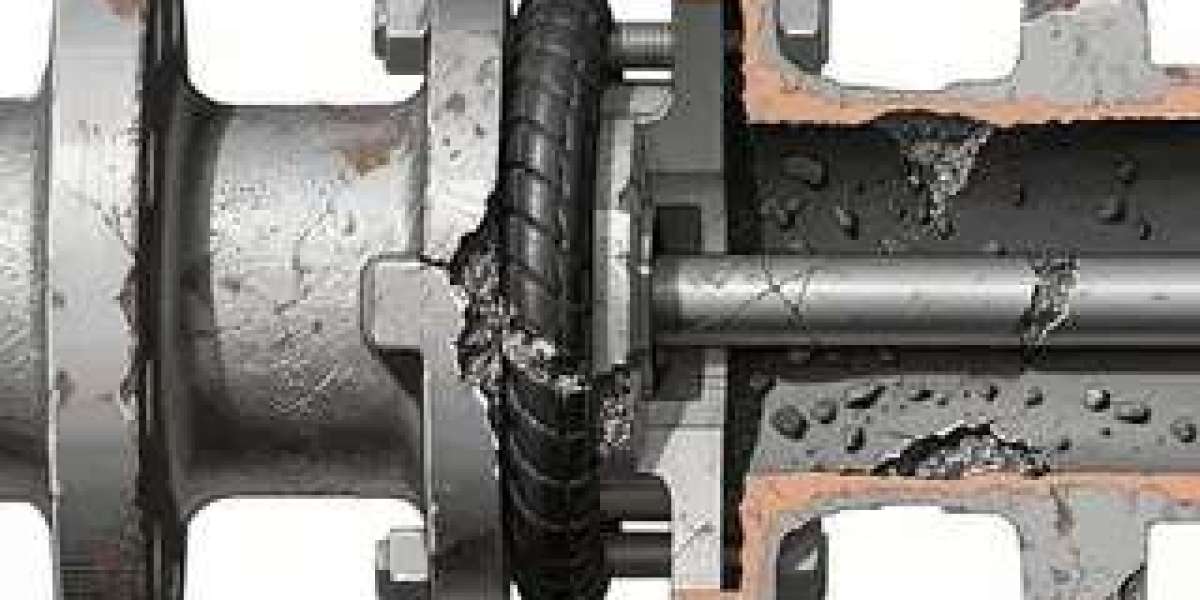Reducing Wear of Valve Packing Seals Through Effective Lubrication
In industrial production, valve packing seals are critical components that ensure equipment operates safely and efficiently by preventing fluid leakage. However, packing seals often experience wear during operation, which can compromise sealing performance and even pose safety hazards. Lubrication is a key factor in reducing wear and extending the service life of packing seals. This article explores the wear mechanisms, the importance of lubrication, and strategies for selecting and applying lubricants to optimize packing seal performance.
Common Causes of Packing Seal Wear
Packing seals work by maintaining tight contact between the packing and valve stem (or rotating shaft). This contact generates friction during movement, leading to wear on both the packing and the valve stem. The extent of wear depends on factors such as material properties, movement speed, lubrication, and installation quality.
1. Packing Installation
Wear is typically greatest at the gland, gradually decreasing inward. Uneven installation—such as too tight or too loose packing, or uneven layers—creates high-stress zones, accelerating wear and negatively impacting sealing performance. Proper installation is essential to distribute pressure evenly along the packing.
2. Non-uniform Movement
If the valve stem lacks coaxial alignment with the packing or packing box, circumferential non-uniform wear occurs. Uneven contact increases local pressure, accelerating wear. Ensuring precise valve stem movement and correct packing installation is critical to reducing frictional damage.
The Role of Lubrication in Reducing Wear
Lubrication is a primary method for mitigating wear in packing seals. Proper lubrication reduces friction, minimizes heat generation, and protects both the packing and valve stem.
1. Types of Lubricants
Common lubricants include:
Lubricating oils – for dynamic movement, offering moderate viscosity.
Greases – suitable for impact, vibration, and high-pressure applications.
Solid lubricants – for extreme temperatures or chemically aggressive environments.
Many braided packings are impregnated with self-lubricating, high-temperature-resistant materials during manufacturing. External lubrication or even the process fluid itself can act as a lubricant in certain conditions.
2. Functions of Lubricants
Lubricants perform two main functions:
Reduce friction and wear by forming a lubricating film between the packing and valve stem.
Dissipate heat generated by friction, preventing thermal damage to the packing.
For example, in high-temperature valves, using a lubricant that cannot withstand heat can lead to dry friction, rapid temperature rise, and premature packing failure.
Selecting the Right Lubricant
The choice of lubricant depends on operating conditions:
| Factor | Selection Guideline |
|---|---|
| Speed of Movement | High-speed valves require lubricants with strong penetration and moderate viscosity. Low-speed, high-load valves benefit from higher-viscosity lubricants. |
| Load or Pressure | Higher load requires higher-viscosity lubricants for better load-bearing capacity. |
| Impact & Vibration | Use greases or solid lubricants that can maintain lubrication under intermittent or reciprocating movement. |
| Working Temperature | Low-temperature areas: low-viscosity oils. High-temperature areas: high-viscosity or solid lubricants. For >200°C, solid lubricants are recommended. |
| Temperature Rise of Lubricant | Lubricant temperature limit should be 20–30°C higher than expected working temperature. |
| Environmental Conditions | Humid or wet conditions: use anti-washout lubricants. Dusty environments: ensure tight packing box seals. Corrosive atmospheres: use lubricants with anti-corrosion properties. |
Optimizing Lubrication Systems
Proper lubrication requires more than selecting the right lubricant; system optimization is equally important.
1. Lubricant Injection
A follower ring in the valve packing assembly allows for lubricant injection and leakage monitoring. In complex conditions, a forced lubrication system ensures a continuous supply of lubricant, preventing dry friction and reducing wear.
2. Leakage Monitoring
The follower ring also allows real-time leakage detection. When leakage exceeds acceptable limits, sealing compounds can be injected to restore performance, minimizing downtime and maintaining operational efficiency.
Practical Case Study
In a chemical plant, a high-temperature, high-pressure valve experienced rapid packing wear. Investigation revealed that the impregnated lubricating oil evaporated quickly due to high heat, causing dry friction. By switching to a high-temperature-resistant solid lubricant and installing a forced lubrication system, the service life of the packing was significantly extended, and leakage was effectively controlled.
Conclusion
Wear is a critical factor affecting the service life and sealing performance of valve packing. By:
Selecting lubricants based on speed, load, temperature, and environmental conditions,
Optimizing lubrication methods and injection systems, and
Monitoring leakage and taking timely remedial measures,
…industrial operators can significantly reduce wear, extend packing life, and improve equipment efficiency and safety.
Understanding the interplay between wear and lubrication is essential for effective valve maintenance and ensuring reliable industrial operations.
It's important to know about Google SEO to help your website rank higher in search results.



